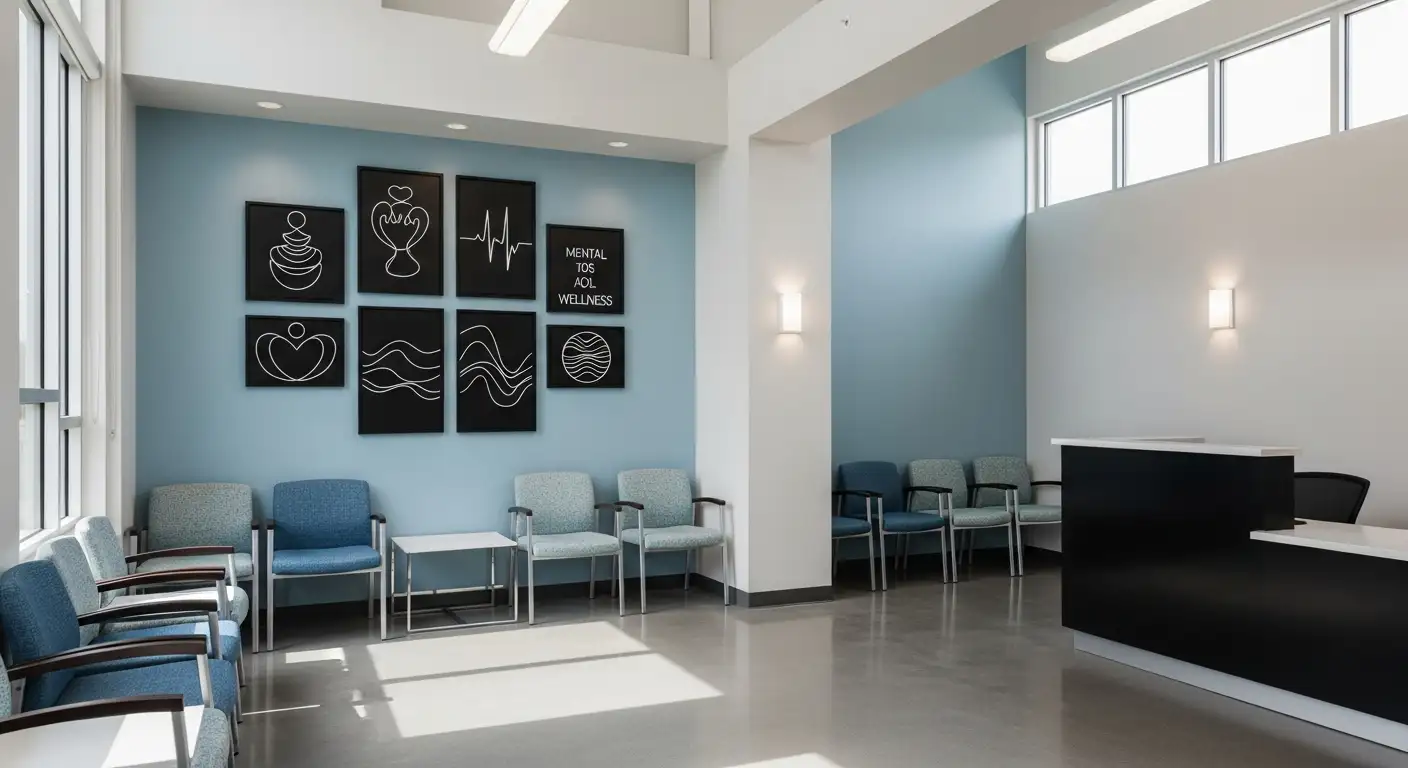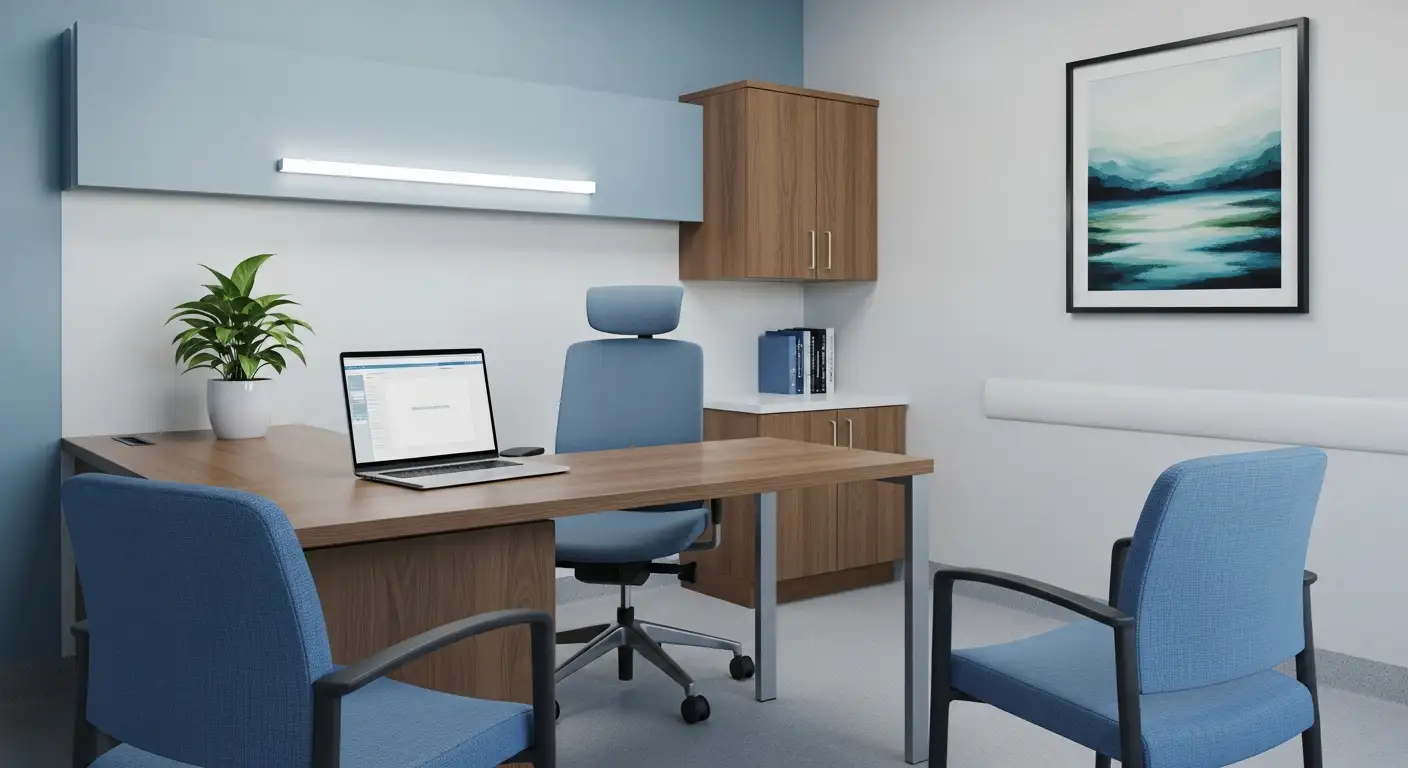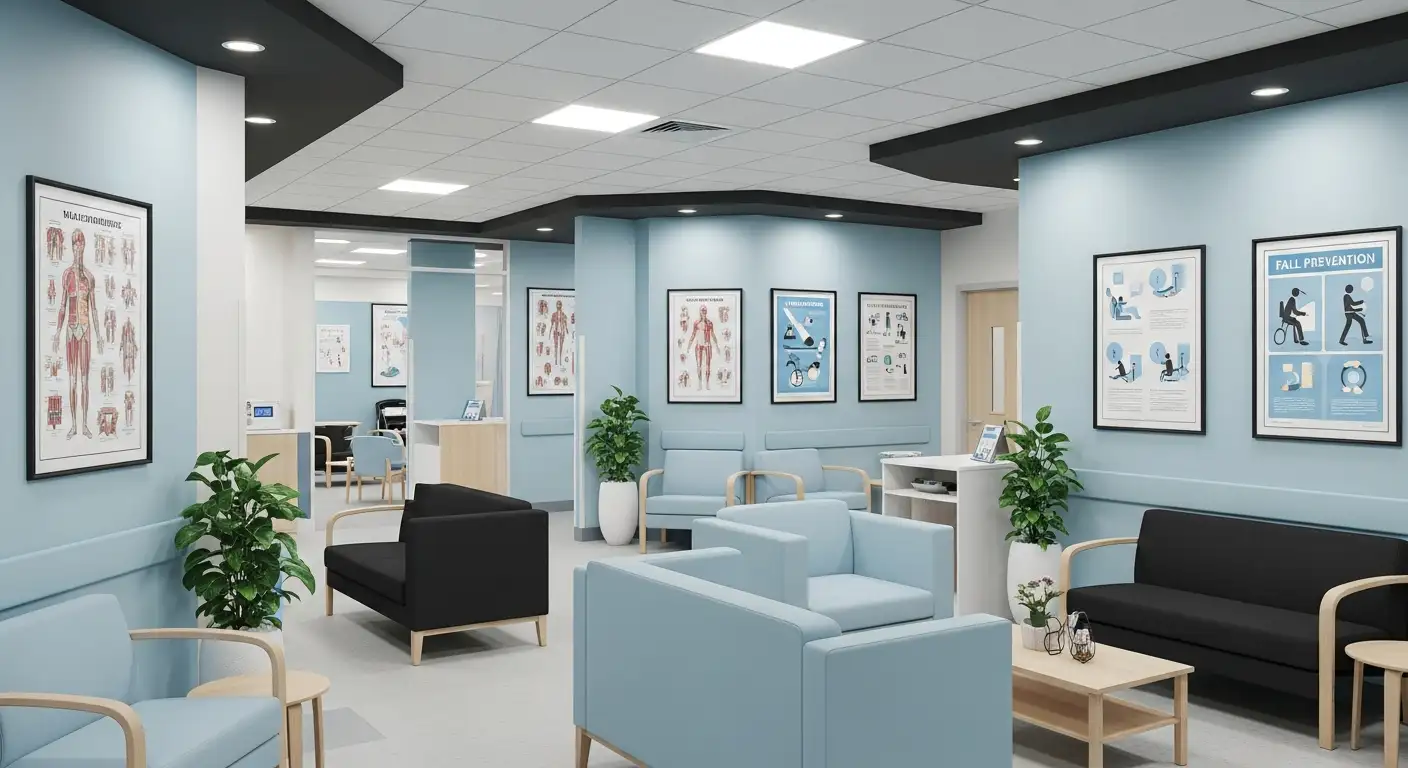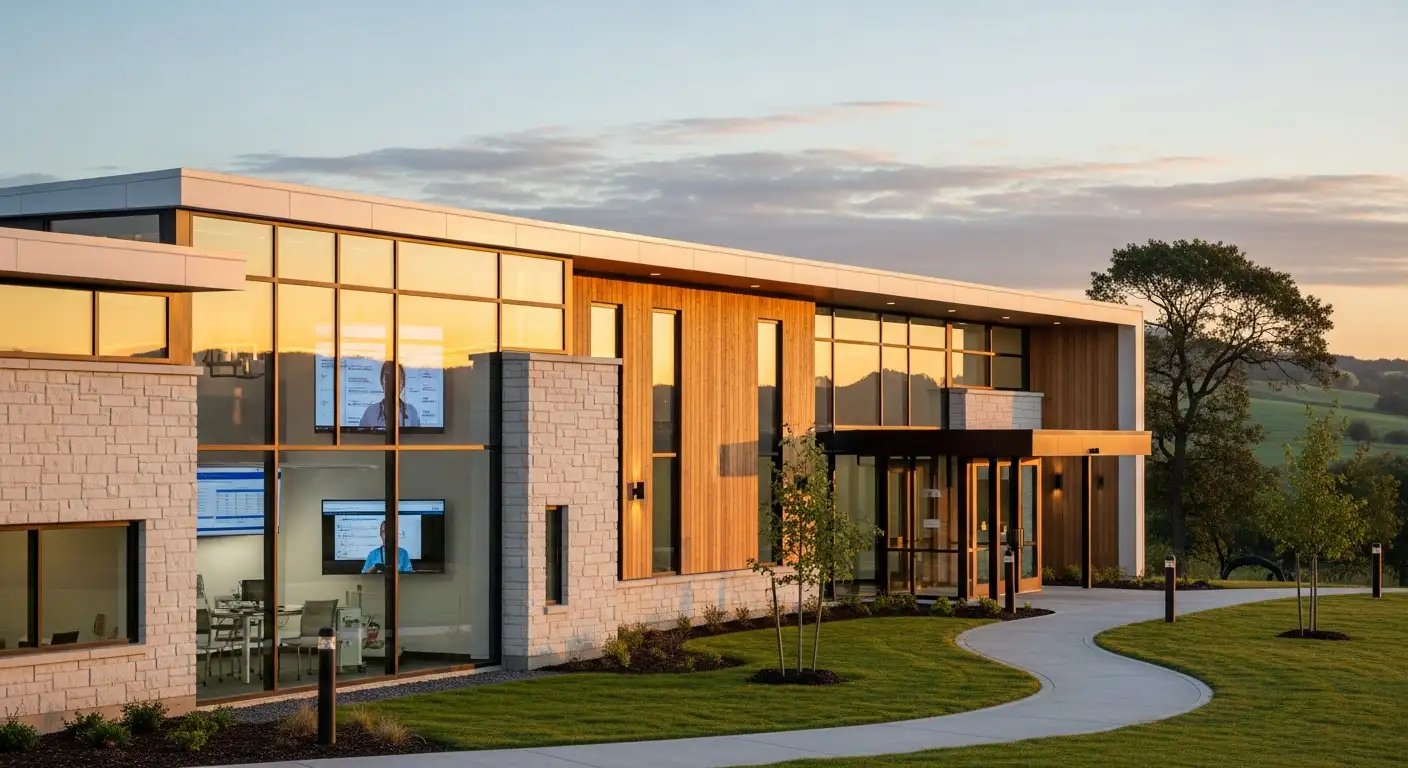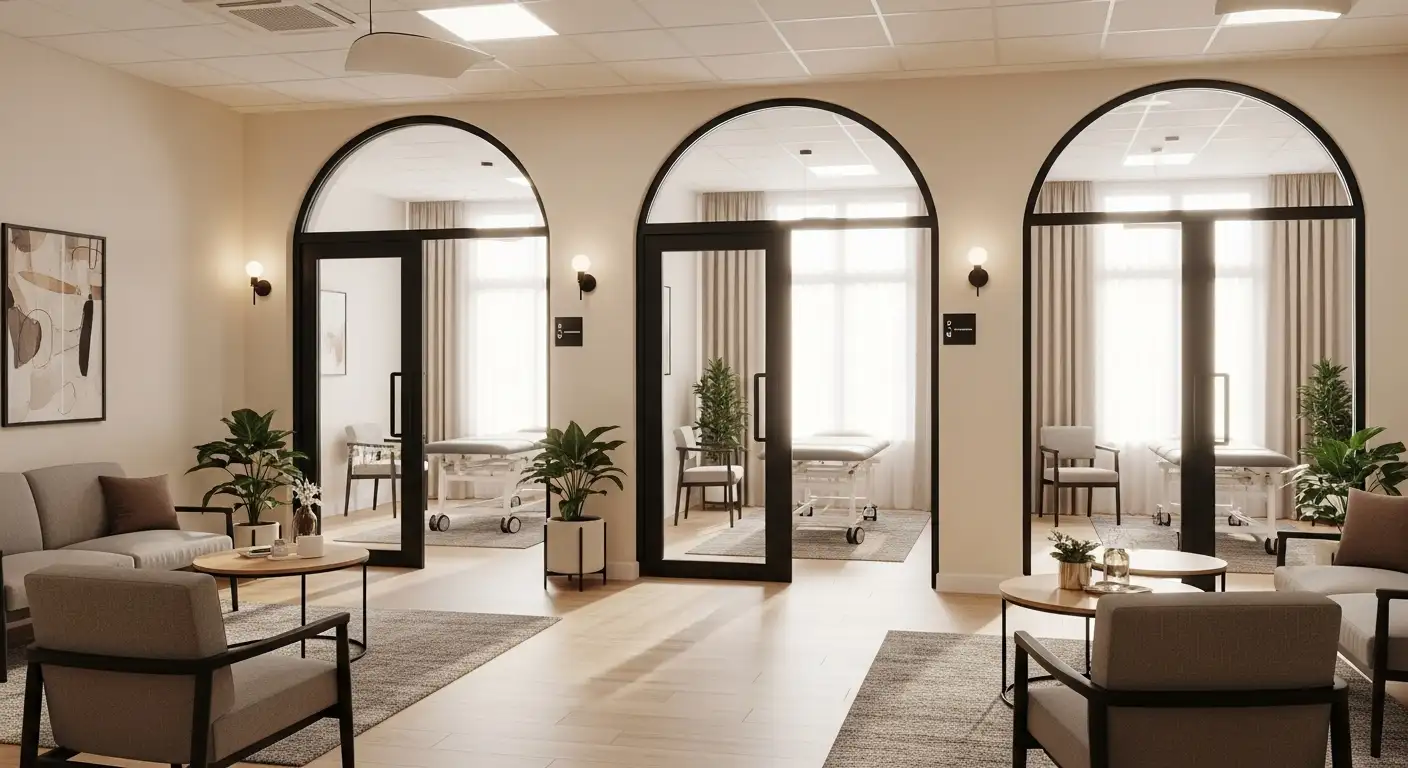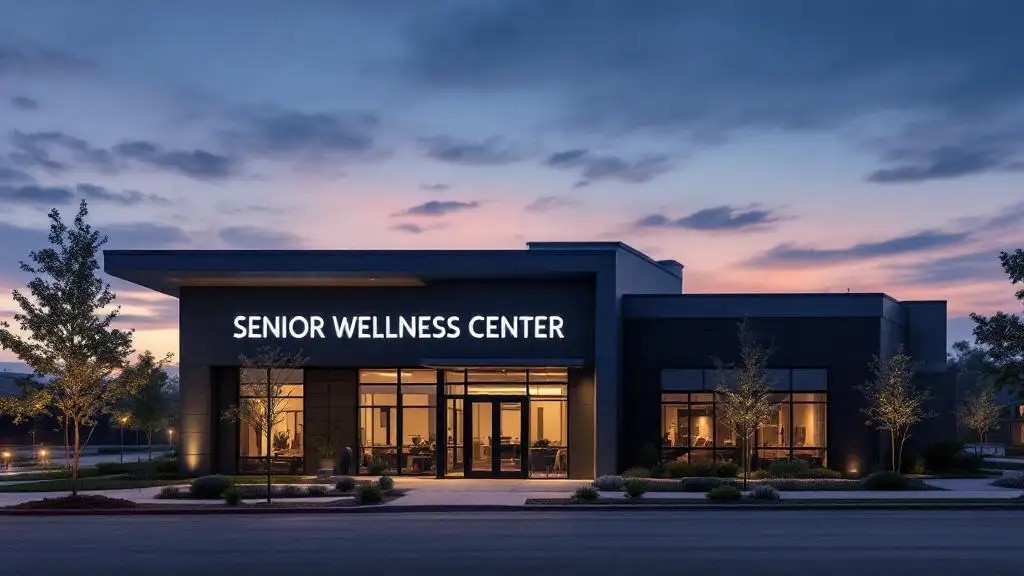Bridging the Psychiatric Divide in Long-Term Care Facilities
Long-term care facilities are facing escalating challenges in meeting the psychiatric and substance use disorder needs of their growing patient populations. With co-occurring behavioral conditions prevalent and the effects of substance use on aging adults increasing, there is an urgent demand for improving access to comprehensive psychiatric services. This article explores evidence-based strategies, policy reforms, workforce development, and innovative care models that long-term care facilities can adopt to enhance mental health and addiction treatment access and quality.
Understanding Comprehensive Treatment Services for Behavioral Health in Long-Term Care
What are comprehensive treatment services for substance abuse and mental health issues?
Comprehensive treatment services for substance abuse and mental health issues consist of integrated and coordinated approaches that simultaneously address both mental health and substance use disorders. These services often combine medical detoxification, individual and group therapies like cognitive-behavioral therapy and motivational interviewing, medication management, and relapse prevention strategies. Tailoring these interventions to the individual's unique needs is crucial for effective outcomes.
Integration of mental health and substance use treatments
Integrated care models are essential because co-occurring disorders often have overlapping symptoms and require coordinated management. For example, many long-term care facilities historically lack sufficient resources to provide both mental health and substance use treatments, resulting in fragmented care and poor outcomes. Modern comprehensive services emphasize combining behavioral health and substance use treatment to promote stability and long-term recovery.
Importance of accurate diagnosis and individualized care
Accurate diagnosis by skilled providers is fundamental, as co-occurring behavioral health conditions can be difficult to differentiate and are influenced by environmental stressors and trauma. Individualized care plans that acknowledge the complexity of each patient's condition ensure that therapies and medications are optimized for effectiveness.
Family involvement and environmental factors in treatment
Family engagement and support systems play a vital role in improving treatment success. Addressing environmental contributors such as ongoing stress, trauma, or social determinants of health enhances recovery potential. In long-term care settings, creating supportive environments that consider these factors helps foster better mental health and substance use disorder outcomes.
| Component | Description | Role in Long-Term Care |
|---|---|---|
| Medical Detoxification | Supervised withdrawal management | Ensures safety during initial treatment phase |
| Therapeutic Interventions | Individual and group therapies including CBT and motivational interviewing | Addresses behavioral patterns linked to disorders |
| Medication Management | Use of medications like MOUD for opioid use disorder | Reduces mortality, supports relapse prevention |
| Integrated Care Coordination | Combining mental health and substance use treatment approaches | Overcomes fragmented care systems, enhances outcomes |
| Family and Environmental Support | Engagement of family and addressing social factors | Strengthens recovery environment and supports adherence |
Tailoring Addiction Treatment Programs for Diverse Substance Use Challenges
How do treatment programs address various forms of addiction?
Addiction treatment programs recognize the unique challenges posed by different substances and customize their approaches accordingly. For instance, treatment for opioid use disorder often includes FDA-approved medications like buprenorphine or methadone to manage withdrawal and cravings. In contrast, treatment for alcohol use disorder might incorporate medications such as naltrexone.
Customization of treatment for different substances
Effective programs tailor therapy and medication to the specific substance involved. They consider factors such as the severity of addiction, co-occurring mental health disorders, and personal circumstances. These tailored interventions improve treatment engagement and outcomes.
Use of evidence-based therapies such as CBT and motivational interviewing
Cognitive-behavioral therapy (CBT) helps patients identify and change thought patterns leading to substance use. Motivational interviewing enhances a person’s motivation to engage in recovery. Both therapies are widely used across various addiction treatments to promote healthier behaviors and increase commitment to sobriety.
Role of medications in managing withdrawal and cravings
Medications are a cornerstone for managing withdrawal symptoms and cravings, reducing risk of relapse. For example:
| Substance | Common Medication(s) | Purpose |
|---|---|---|
| Opioids | Buprenorphine, Methadone | Manage withdrawal, reduce cravings |
| Alcohol | Naltrexone, Acamprosate | Decrease relapse risk |
| Tobacco | Nicotine replacement therapy | Ease withdrawal symptoms |
Peer support and relapse prevention strategies
Support groups such as Alcoholics Anonymous (AA) and Narcotics Anonymous (NA) provide a community-based approach to recovery. These peer support systems offer accountability and a platform to share challenges and coping strategies.
Relapse prevention is a critical focus, involving skills development to recognize triggers, stress management, and ongoing counseling. Together, these comprehensive strategies help individuals sustain long-term recovery amidst diverse substance use challenges.
Growing Psychiatric and Substance Use Disorders in Aging Long-Term Care Populations
Increasing substance use among older adults in long-term care
Substance use, including alcohol, opioids, stimulants, and cannabis, is on the rise among older adults, a demographic increasingly represented in long-term care settings. This uptick signals an evolving challenge for nursing facilities as they encounter more residents dealing with substance use disorders (SUD).
Rising mortality from opioid overdoses in elderly populations
Tragically, mortality rates from opioid overdoses have more than tripled among older adults. This alarming trend highlights the critical need for targeted interventions and better support mechanisms within nursing home environments.
Challenges nursing facilities face in treating substance use disorder (SUD)
Despite the pressing need, most nursing homes are ill-equipped to manage SUD effectively. Few facilities provide medications for opioid use disorder (MOUD), even though MOUD has been shown to reduce mortality by half. Barriers delaying adequate care include understaffing, high employee turnover, insufficient training, unclear regulations, logistic hurdles such as transportation, and persistent stigma surrounding addiction treatment.
Recognition of SUD as a chronic condition in elderly care
Progress in addressing these challenges requires recognizing SUD as a chronic medical condition. This recognition supports systematic screening within facilities, initiation or facilitation of MOUD, and establishing connections to behavioral health services. Recent regulatory changes, including removal of the X waiver for buprenorphine and broader telehealth access, provide promising avenues to improve treatment delivery in these settings.
These combined efforts are essential to close the treatment gap, improve outcomes, and reduce overdose deaths among the aging population in long-term care.
Barriers Limiting Access to Psychiatric Services in Long-Term Care Facilities
Workforce Shortages and High Turnover Rates
Long-term care facilities face significant workforce shortages, compounded by high staff turnover. These factors critically reduce the availability of consistent, skilled psychiatric and substance use disorder (SUD) care for residents. Staff shortages impede the facility’s ability to provide continuous behavioral health services.
Lack of Staff Training in Evidence-Based Psychiatric and SUD Treatments
Many nursing facilities lack personnel adequately trained in evidence-based psychiatric care and SUD treatments. This gap leads to underutilization of effective interventions such as medications for opioid use disorder (MOUD). Without specialized training, staff may be ill-equipped to meet complex behavioral health needs.
Stigma Attached to Behavioral Health in Elderly Populations
Stigma surrounding mental health and substance use disorders persists, particularly among older adults. This cultural barrier discourages both staff and residents from seeking or providing appropriate care, further limiting treatment engagement within long-term care settings.
Regulatory and Reimbursement Challenges
Regulations at the federal and state levels often create hurdles for providing psychiatric and SUD care in nursing facilities. Strict controls on medications like methadone and reimbursement limitations restrict treatment options. These policies, coupled with unclear regulatory guidance, impede care delivery.
Fragmented Care Systems and Poor Technology Integration
Historically, medical, mental health, and substance use treatment systems operate separately. This fragmentation undermines care coordination essential in long-term care. Additionally, many facilities struggle with poor technology integration, limiting the use of electronic health records and telehealth services that could enhance access and continuity of care.
Medication for Opioid Use Disorder (MOUD): Underutilization and Opportunities
How Does MOUD Benefit Patients?
Medication for Opioid Use Disorder (MOUD) significantly reduces mortality by about 50% among those with opioid use disorder (OUD). This life-saving advantage highlights MOUD as an essential component in managing OUD, especially in vulnerable populations such as nursing home residents.
Why Is MOUD Underutilized in Nursing Facilities?
Despite its proven benefits, most nursing facilities do not offer MOUD to residents with OUD. Several factors contribute to this underuse:
- Underresourcing with insufficient staffing and funding
- High staff turnover disrupting continuity of care
- Lack of specialized training for managing OUD
- Regulatory uncertainties that complicate implementation
- Logistical challenges like transportation and medication management
- Persistent stigma around substance use disorders within long-term care settings
What Impact Have Policy Changes Had?
Recent policy reforms have started to ease access to MOUD. Notably, the elimination of the X waiver for buprenorphine prescribing removes a major barrier for clinicians, allowing more providers to initiate MOUD. Telehealth-based assessments have further enhanced access by facilitating remote evaluation and treatment initiation.
How Do Regulations Affect Methadone Treatment?
Methadone treatment remains tightly regulated, creating ongoing logistical challenges for nursing homes seeking to provide it. However, innovations like mobile treatment units and telehealth platforms are emerging to address these barriers. These flexible delivery models support safer and more convenient methadone administration, expanding treatment options.
Overall, despite proven efficacy, MOUD availability in nursing facilities is limited by structural and regulatory barriers. Continued policy reforms and adoption of flexible treatment models present critical opportunities to improve MOUD access and reduce opioid-related mortality in these high-risk populations.
The Role of Telehealth and Technology in Expanding Psychiatric Access
Telehealth's Rapid Growth During the COVID-19 Pandemic
The COVID-19 pandemic sparked a major surge in telehealth usage, dramatically changing how psychiatric services are delivered. From March to August 2021, over 36% of mental health visits were conducted remotely. This rapid adoption helped overcome traditional barriers to care such as transportation, stigma, and lack of local providers.
Improved Access for Rural and Underserved Nursing Facility Residents
Telehealth has notably improved access to behavioral health services for residents in rural and underserved nursing facilities. These populations often face unique obstacles including staff shortages, logistical challenges, and regulatory complexities. Telepsychiatry allows residents to receive timely evaluations and medication management without needing to leave the facility, bridging critical gaps in treatment access.
Electronic Health Records Facilitating Care Coordination
The integration of electronic health records (EHR) has enhanced coordination between general medical, mental health, and substance use treatment providers. EHRs streamline information sharing and improve continuity of care, which is vital for individuals with co-occurring medical and behavioral health conditions. This technology reduces fragmentation and supports more responsive, patient-centered care.
Lower-Threshold Treatment Options Enabled Through Technology
Telehealth and technology have enabled the expansion of lower-threshold treatment options such as medication-assisted treatment (MAT) and harm reduction programs. Remote prescribing, virtual consultations, and mobile treatment units facilitate easier access to essential medications like buprenorphine, even amid regulatory relaxation. These innovations help ensure that patients can engage with treatment earlier and with fewer barriers, improving health outcomes.
Together, these technological advances are transforming psychiatric care delivery by expanding reach, enhancing quality, and making treatment more accessible to populations historically underserved in the mental health system.
Collaborative and Integrated Care Models Benefiting Long-Term Care Settings
Collaborative Care Model and Psychiatric Collaborative Care Model (CoCM)
Collaborative care models, including the Psychiatric Collaborative Care Model (CoCM), have become vital in integrating mental health and substance use disorder treatments within primary care and long-term care settings. These models emphasize teamwork between primary care providers, behavioral health specialists, and care managers to deliver coordinated and patient-centered care.
Success in Primary Care with Increased Prescription Fills and Behavioral Health Utilization
The CoCM has shown success in primary care by increasing prescription fills for medications like buprenorphine for opioid use disorder and anxiolytics for co-occurring anxiety or depression. Patients in collaborative care settings also experience higher utilization of mental health services, indicating better access and adherence to treatment protocols.
Screening and Team-Based Approaches for Early Identification and Treatment
Integrated care models prioritize screening for depression, anxiety, and other behavioral disorders within primary and long-term care practices. Team-based approaches engage behavioral health providers alongside medical practitioners, facilitating earlier detection and prompt treatment initiation. This approach enables providers to address complex behavioral health needs effectively before conditions worsen.
Potential to Reduce Overall Healthcare Costs While Improving Outcomes
By coordinating behavioral health treatment within long-term care, collaborative care models can enhance health outcomes without increasing total healthcare expenditure. Effective management of co-occurring mental health and substance use disorders helps reduce complications from comorbid medical conditions, potentially lowering hospitalizations and emergency visits.
| Aspect | Description | Benefits for Long-Term Care Settings |
|---|---|---|
| Collaborative Care Models | Integration of behavioral health in primary and long-term care via interdisciplinary teams | Improved access to behavioral health services; early intervention |
| Prescription Medication Access | Increased fills of MOUD and psychiatric medications | Enhanced treatment adherence, reduced mortality in conditions like OUD |
| Screening and Early Identification | Routine behavioral health screening and team engagement | Timely treatment reduces severity and promotes recovery |
| Cost Implications | Potential reduction in hospitalization and integrated resource use | Lower healthcare costs with maintained or improved patient outcomes |
Enhancing Workforce Capacity Through Advanced Practice Registered Nurses (APRNs)

How effective are Psychiatric Mental Health Nurse Practitioners (PMHNPs) in mental health and substance use disorder treatment?
PMHNPs have demonstrated effectiveness comparable to physicians in providing care for mental health and substance use disorders. Their outcomes in managing these conditions contribute significantly to expanding treatment capacity, particularly in underserved areas where access to psychiatrists is limited.
What is the growth trend in prescriptions by psychiatric nurse practitioners?
Between 2017 and 2021, psychiatric nurse practitioners saw the largest increase in prescribing psychotropic medications and opioid use disorder treatments, with a 44.7% growth. Their role in delivering psychiatric medications, especially in rural and underserved communities, is increasingly vital.
Why is full practice authority important for APRNs?
States granting full practice authority to APRNs allow independent practice, which correlates with higher proportions of NPs providing mental health care. This autonomy improves access to services, especially in rural and underserved areas, filling critical workforce shortages.
What policy recommendations support APRNs' role in behavioral health?
Key recommendations include expanding APRN roles and clarifying scopes of practice and specialties. Removing restrictive scope-of-practice laws and ensuring reimbursement parity bolster their capacity to meet growing mental health and substance use disorder treatment demands. Enhancing these frameworks will facilitate timely, quality care delivery across diverse populations.
| Aspect | Detail | Impact |
|---|---|---|
| PMHNP Effectiveness | Outcomes comparable to physicians in treating mental health and SUD | Increases treatment quality and expands workforce reach |
| Prescription Growth | 44.7% increase in psychiatric and OUD medication prescriptions by psychiatric NPs (2017–2021) | Addresses medication access gaps in underserved areas |
| Full Practice Authority | Enables APRNs to practice independently in many states | Enhances access, especially in rural and underserved regions |
| Policy Recommendations | Remove scope-of-practice restrictions, clarify specialty roles, ensure reimbursement parity | Supports workforce expansion and equitable care delivery |
Addressing Racial and Ethnic Disparities in Access to Integrated Mental Health Services
Lower availability of integrated mental health services in Black and Hispanic communities
Integrated mental health services at substance use disorder (SUD) treatment facilities are less available in communities with higher Black and Hispanic populations. Specifically, availability drops by 5% for every 10-percentage point increase in the Black community population and 7% for Hispanic communities. This disparity highlights significant racial and ethnic inequities in accessing integrated behavioral health care.
Geographic disparities across US regions affecting nursing facilities
Geographic disparities also impact access to integrated mental health services. Regions including large parts of the South, Midwest, and Mountain West show notably lower availability of integrated care in nursing and SUD facilities. These regional gaps compound challenges for minority communities disproportionately residing in these areas, exacerbating inequities in behavioral health service delivery.
The need for targeted programs to reduce inequities
Addressing these disparities requires targeted programs focused on nonwhite populations. Such initiatives should consider culturally tailored outreach, workforce diversification, and removing systemic barriers like stigma and fragmented care. Strengthening integration efforts in underserved areas can promote equity and improve behavioral health outcomes.
Social determinants of health impacting access and outcomes
Social determinants such as housing instability, economic insecurity, and structural racism significantly impact access to and quality of behavioral health care. Effective strategies must incorporate these social factors into care models to ensure comprehensive support and reduce health disparities in marginalized groups.
Policy Initiatives Supporting Improved Psychiatric Access in Long-Term Care
Insurance Expansion and Parity Laws
Public policy has increasingly focused on expanding insurance coverage and enforcing parity laws to improve access to mental health and substance use disorder (SUD) treatments. These laws ensure that mental health services receive equal coverage compared to physical health services, which aids long-term care facilities in securing necessary funding for psychiatric care. Such expansions reduce the financial barriers for residents requiring behavioral health services.
Innovative Payment Models Encouraging Integrated Care
New payment models incentivize long-term care providers to integrate behavioral health services with general medical care. Models like value-based payment encourage facilities to coordinate care, leading to more comprehensive treatment approaches. These innovations aim to reduce high healthcare costs linked to co-occurring mental health and medical conditions common in elderly populations.
State-Supported Initiatives for Behavioral Health Integration
Several states have launched initiatives to support behavioral health integration in nursing facilities. Programs offer funding, training, and technical assistance to help facilities adopt evidence-based psychiatric treatments and medication-assisted therapies. State-led efforts also promote collaborative care models and facilitate access to behavioral health consultants within primary care settings.
Federal Regulations Easing MOUD Access and Telehealth Usage
Federal regulations have evolved to ease access to medications for opioid use disorder (MOUD) within nursing facilities. Notably, the elimination of the X waiver for buprenorphine prescribing and expanded use of telehealth-based assessments have reduced previous barriers. Although methadone regulations remain strict, emerging flexible models like mobile treatment units and telehealth solutions are beginning to address logistical challenges.
Together, these policy initiatives aim to prepare long-term care facilities better for the growing population of older adults with psychiatric and substance use disorders, addressing barriers such as underresourcing, stigma, and workforce shortages to improve overall care quality and reduce mortality.
Importance of Early Screening and Assessment in Long-Term Care
Use of validated screening tools for depression, anxiety, and substance use
Early screening in long-term care settings utilizes validated tools to identify depression, anxiety, and substance use disorders promptly. Tools such as the Patient Health Questionnaire (PHQ-9) for depression and the Alcohol Use Disorders Identification Test (AUDIT) are examples that facilitate standardized assessment. These instruments enable staff to detect behavioral health issues with greater accuracy and consistency among residents.
Benefits of early identification to prevent escalation
Identifying mental health and substance use issues early in nursing facilities helps prevent the worsening of symptoms and reduces complications. Timely recognition allows prompt initiation of evidence-based treatments, reducing mortality and improving quality of life. Moreover, early detection decreases hospitalizations and healthcare costs by addressing conditions before they escalate.
Integration of screening into routine nursing facility assessments
Incorporating behavioral health screening into routine nursing assessments ensures continuous monitoring of residents' mental well-being. This integration supports the identification of emerging issues and better management of co-occurring medical and behavioral conditions. Systematic screening within care workflows addresses barriers such as workforce shortages and fragmented care by establishing clear protocols and responsibilities.
Examples from child and adolescent programs adapted for adult care
Tools originally developed for children and adolescents, such as the Child and Adolescent Needs and Strengths (CANS) assessment, inform approaches adapted for adult long-term care. These comprehensive programs emphasize holistic evaluation, facilitating person-centered care planning. Employing lessons from early intervention strategies promotes recovery and supports behavioral health integration in nursing facilities, improving outcomes for older adults with substance use disorders or mental health conditions.
Community and Home-Based Outreach to Reduce Hospitalizations and Improve Engagement

Assertive Community Treatment (ACT) in Elderly Behavioral Health
Assertive Community Treatment (ACT) is a comprehensive, team-based model designed to support individuals with severe behavioral health conditions in their communities. For elderly patients, particularly those with co-occurring mental health and substance use disorders, ACT offers tailored care that addresses both psychiatric and medical needs. This approach is vital given that older adults with behavioral health conditions often have higher medical comorbidities, such as diabetes and heart disease, which increase risk for early mortality.
In-Home Visits and Wraparound Care Coordination
In-home visits play a crucial role in engaging elderly patients who may face mobility or transportation challenges. These visits allow providers to assess behavioral health needs in the patient's environment and deliver personalized interventions. Wraparound care coordination complements this by integrating services across medical, behavioral, and social domains, ensuring continuity and comprehensive support. Together, these strategies help prevent crises that otherwise lead to hospitalization.
Certified Community Behavioral Health Centers (CCBHCs) Supporting Nursing Facilities
CCBHCs provide holistic, evidence-based behavioral health services and are increasingly supporting nursing facilities by extending integrated care. Many nursing homes currently lack adequate resources and training to provide evidence-based treatments, such as medications for opioid use disorder. By collaborating with CCBHCs, nursing facilities can improve access to behavioral health services, addressing growing substance use disorders among aging residents, and offering medication-assisted treatment that reduces mortality.
Benefits in Reducing Unnecessary Hospital Stays and Improving Outcomes
Community and home-based outreach interventions are effective in reducing unnecessary hospitalizations by managing behavioral health conditions proactively. These approaches enhance engagement with marginalized elderly populations, lower healthcare costs associated with repeated inpatient stays, and improve overall outcomes by providing care in less restrictive, person-centered settings. Early identification and continuous support through ACT, in-home visits, and coordination by CCBHCs form a foundation for sustainable recovery and improved quality of life among elders with behavioral health challenges.
Integrating Behavioral Health with General Medical Care in Long-Term Facilities
Addressing medical comorbidities common with behavioral health disorders
People living with behavioral health conditions frequently experience other significant medical comorbidities such as diabetes and heart disease. These overlapping health challenges contribute to earlier mortality rates among this population. Effectively managing these comorbidities requires coordinated care approaches that recognize the complex interplay between physical and behavioral health.
Reducing deaths linked to untreated behavioral conditions
Untreated behavioral disorders, especially substance use disorders (SUD), significantly increase risks of mortality. For example, the mortality rate of residents with opioid use disorder (OUD) can be halved through medication for opioid use disorder (MOUD). Despite such evidence, many long-term care facilities do not provide MOUD due to logistical, regulatory, and infrastructural barriers.
Benefits of integrating mental health, substance use, and primary medical care
Integration of behavioral health and general medical care creates a collaborative environment that supports comprehensive treatment. It enhances early identification and treatment of behavioral health conditions while simultaneously managing physical health. Integrated care models have demonstrated improved health outcomes, better treatment adherence, and reduced overall healthcare costs by avoiding fragmented and duplicative services.
Examples of systems moving beyond historical care separation
Historically, care systems for medical, mental health, and substance use disorders have operated separately, hindering coordination. However, some nursing facilities and health systems now implement integrated care strategies, including collaborative care approaches and use of telehealth, to bridge these divides. Public policy reforms and technological advances are enabling more long-term facilities to adopt evidence-based integrated models that better serve aging patients with co-occurring disorders.
Financial Burden of Co-occurring Behavioral and Medical Disorders in Long-Term Care
High Healthcare Costs Associated with Comorbid Conditions
Co-occurring behavioral health and medical disorders significantly increase healthcare expenditures. In 2012, healthcare costs related to these comorbid conditions were estimated at $293 billion. Individuals with behavioral health conditions often suffer from additional medical issues such as diabetes and heart disease, which contribute to these elevated costs and increase mortality risk.
Financial Challenges Facing Underresourced Long-Term Care Facilities
Nursing facilities are seeing a growing population of aging patients with substance use disorders (SUD), yet many remain unprepared to deliver evidence-based treatment. Most do not provide medications for opioid use disorder (MOUD), despite evidence showing MOUD can reduce mortality rates by half. These facilities face serious financial hurdles including underresourcing, high staff turnover, and regulatory complexities, all of which hinder comprehensive care provision.
Cost Savings from Integrated Behavioral Health Services
Integrated behavioral health models within long-term care and primary care settings demonstrate potential to improve outcomes while controlling costs. Collaborative care and integrated mental health clinics have shown promise in enhancing care coordination, reducing hospitalization rates, and improving management of comorbid conditions without increasing overall healthcare spending.
Potential Payment Reforms to Encourage Comprehensive Care
To address financial barriers, payment reforms are crucial. Innovative payment models promoting integrated care can incentivize long-term care facilities to implement behavioral health services. Policy efforts focus on expanding reimbursement for MOUD and behavioral therapies, easing regulatory restrictions, and developing quality measures that reward comprehensive, coordinated care. Such reforms aim to improve both access and financial sustainability across care settings.
Training and Educational Programs to Enhance Psychiatric Expertise in Long-Term Care Staff
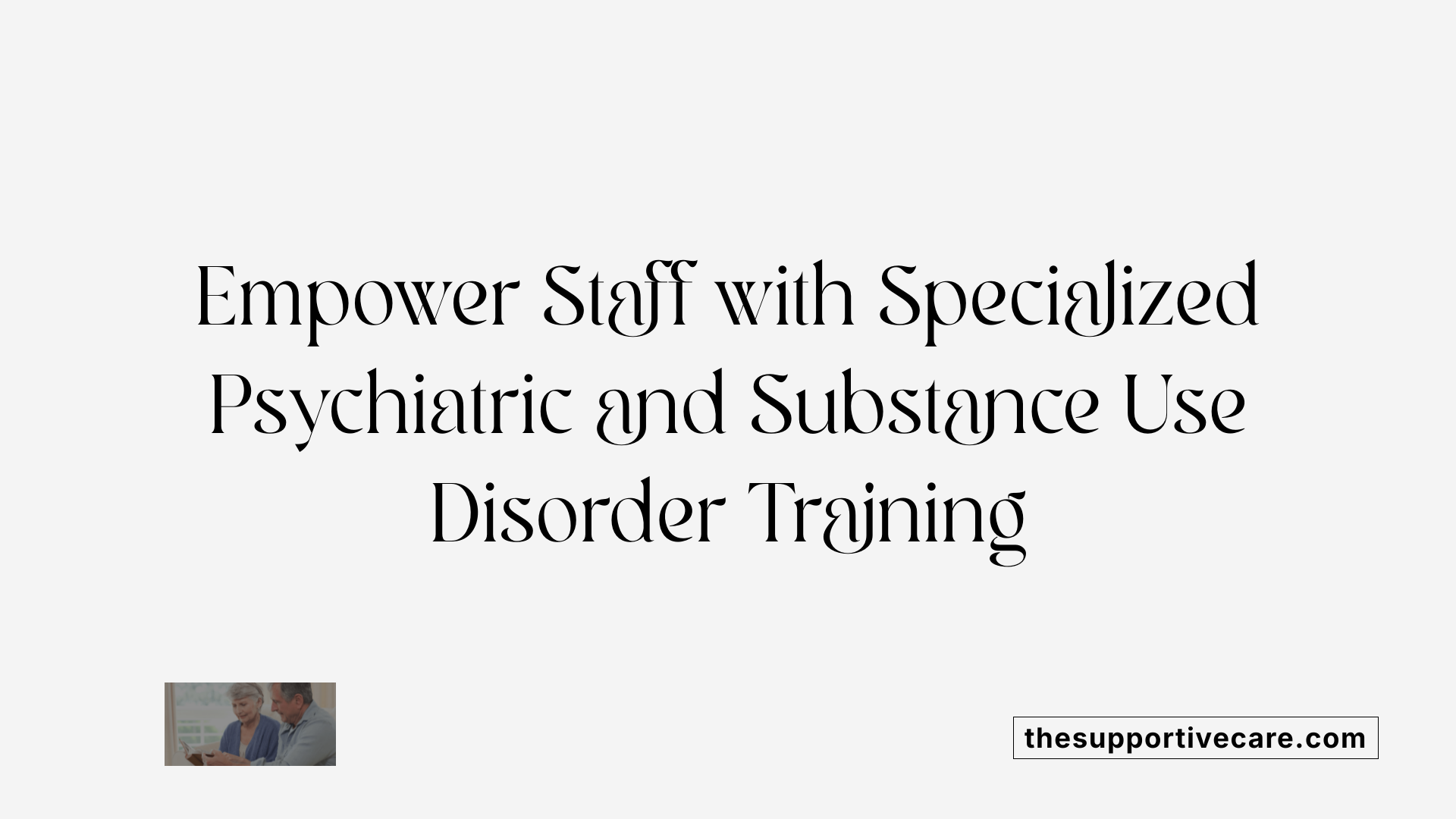
Why is evidence-based behavioral health training essential for long-term care staff?
Long-term care facilities increasingly serve aging residents with complex psychiatric and substance use disorders. To provide effective, evidence-based treatment that can improve outcomes such as reduced mortality and better symptom management, staff must receive specialized training tailored to behavioral health needs. Without proper education, staff cannot confidently deliver or facilitate treatments like medications for opioid use disorder (MOUD), contributing to care gaps.
How do technical assistance and collaborative learning models support staff?
Technical assistance programs offer ongoing expert guidance while collaborative learning networks enable staff to share best practices, address challenges together, and stay updated on evolving treatment standards. These models foster an environment of continuous skill development, enhancing overall psychiatric expertise among long-term care personnel.
Can enhanced training improve staff retention?
Yes. Competence in managing psychiatric conditions increases job satisfaction as staff feel more effective and confident. Support through targeted education reduces burnout and turnover, creating a more stable workforce equipped to address behavioral health in residents.
What are examples of facility-led and state-sponsored initiatives?
Some nursing homes have launched in-house training programs integrating behavioral health curricula. States also sponsor education efforts, including workshops, certification courses, and resource toolkits, aimed at equipping staff with necessary knowledge. Collaborative care approaches frequently incorporate such programs as part of comprehensive strategies to improve SUD and mental health care in long-term care settings.
Combating Stigma in Long-Term Care Facilities to Improve Treatment Uptake

Why is stigma a barrier to psychiatric and SUD treatment in long-term care facilities?
Stigma remains a significant obstacle to effective psychiatric and substance use disorder (SUD) treatment within nursing homes and other long-term care settings. Negative attitudes towards mental illness and substance use not only affect residents seeking help but also influence staff willingness to provide care. Stigma contributes to underdiagnosis, reluctance to initiate medication for opioid use disorder (MOUD), and overall poor treatment adherence.
What strategies promote cultural competence and trauma-informed care?
Promoting cultural competence and trauma-informed approaches is essential to overcoming stigma. Facilities can implement staff training programs that emphasize understanding the diverse cultural backgrounds and trauma histories of residents. Such training fosters empathy, reduces stereotypes, and equips caregivers with tools to support residents respectfully and effectively. Programs that incorporate motivational interviewing and person-centered care also help tailor treatments to individual needs, further mitigating stigma.
How do leadership and staff attitudes shape facility culture?
Leadership plays a crucial role in setting the tone for stigma reduction. When administrators model openness and prioritize behavioral health integration, they establish a culture supportive of mental health and SUD treatment. Staff attitudes, shaped through ongoing education and positive reinforcement, influence resident experiences and willingness to engage in care. High staff turnover and inadequate training can reinforce stigma, highlighting the need for organizational commitment and investment.
What is the impact of reducing stigma on treatment adherence and recovery?
Reducing stigma within long-term care facilities leads to improved treatment uptake and adherence. When residents feel accepted and supported, they are more likely to participate in behavioral health services and adhere to medication regimens, including MOUD. This supportive environment can accelerate recovery, reduce mortality, and improve quality of life. Ultimately, stigma reduction fosters a holistic approach, addressing not only medical and psychiatric needs but also social and emotional well-being.
Innovations in Crisis Response and Stabilization for Long-Term Care Residents
Mobile Crisis Teams and Regionally Based Crisis Response Systems
Mobile crisis teams provide rapid, community-based intervention during behavioral health emergencies, which is critical for long-term care residents experiencing mental health or substance use crises. Funded in part by Medicaid payments from federal initiatives like the American Rescue Plan Act, these teams operate regionally to cover urban and rural areas effectively, ensuring timely access to care that prevents unnecessary hospitalizations.
Crisis Stabilization Facilities and Peer-Operated Respite Services
Crisis stabilization facilities offer short-term, intensive care as alternatives to inpatient hospitalization. These facilities are particularly beneficial for long-term care residents by delivering focused stabilization in less restrictive environments. The emergence of peer-operated respite services adds a supportive layer by involving individuals with lived experience, fostering a welcoming and understanding atmosphere that promotes recovery and reduces stigma.
Role of 988 Lifeline and Warmlines in Providing Immediate Support
The 988 Suicide and Crisis Lifeline has been adopted in over half of U.S. states, substantially enhancing immediate telephonic crisis support. This service, alongside warmlines—non-crisis, supportive helplines—plays a vital role in addressing the urgent emotional and psychological needs of long-term care residents and their families. The availability of these services reduces reliance on emergency rooms and law enforcement involvement.
Integration of Culturally Tailored Services for Diverse Populations
Effective crisis response models increasingly incorporate culturally tailored services that acknowledge the unique backgrounds of diverse populations, including Indigenous communities served by Native crisis lines. This integration ensures that long-term care residents receive sensitive and personalized support that respects cultural values and enhances engagement in crisis intervention and ongoing care.
Addressing Social Determinants of Health in Psychiatric Treatment for Long-Term Care Residents
How Do Housing Stability and Economic Support Aid Recovery?
Stable housing and economic resources are fundamental for individuals in long-term care dealing with psychiatric and substance use disorders. Recovery is not solely about medical treatment but also about living in an environment where basic needs are met. Permanent supportive housing programs provide safe, affordable living situations combined with clinical support, reducing relapse rates and hospitalizations.
What Are the Roles of Permanent Supportive Housing and Supported Employment?
Permanent supportive housing links individuals with mental health challenges to stable living conditions with ongoing assistance. Supported employment programs integrate job training and placement services, helping residents gain economic independence, which fosters self-esteem and social integration. These services together enhance quality of life and sustain long-term recovery.
How Does Structural Racism Impact Health Equity in Long-Term Care?
Structural racism manifests in disparities in access to integrated mental health and substance use treatment, especially in facilities serving minority populations. Residents in predominantly Black and Hispanic communities are less likely to receive comprehensive care. Addressing these inequities requires policies targeting social determinants and ensuring equitable resource allocation for minority groups.
Why Are Holistic Care Models Including Social Context Assessment Important?
Holistic care models assess not only the medical needs but also the social determinants affecting long-term care residents, such as economic stability, social support, and community integration. Incorporating social context screening facilitates personalized interventions that address underlying challenges, improving treatment outcomes and reducing healthcare costs.
Integrating social determinants of health into psychiatric treatment for long-term care residents is essential for effective recovery and health equity. It requires collaborative efforts across healthcare, housing, employment, and social services to create supportive environments where individuals can thrive.
Role of Peer Support and Family Engagement in Improving Long-Term Care Psychiatric Services
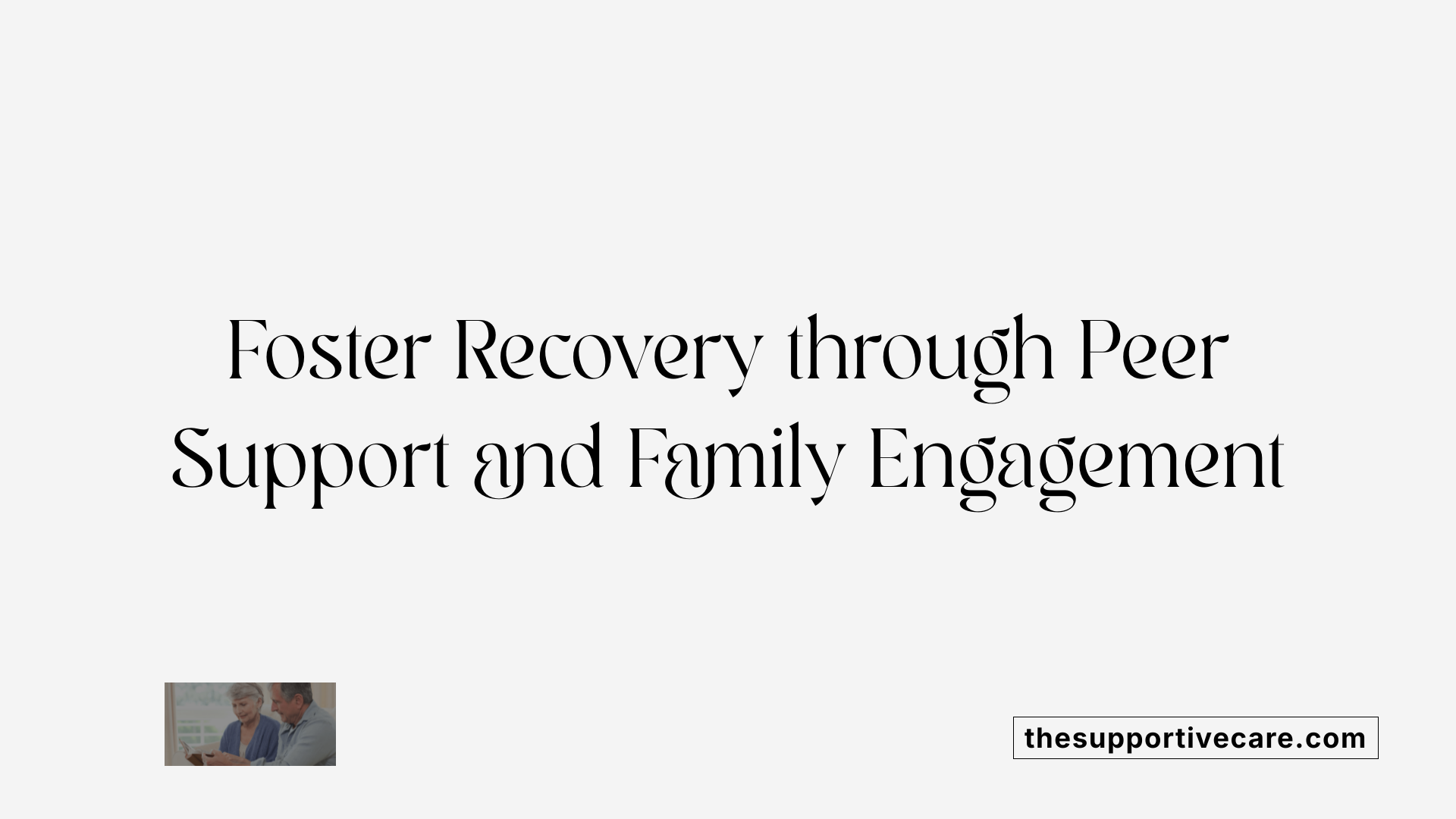
Incorporation of Peer-Operated Programs and Support Groups
Peer-operated programs and support groups are essential components of long-term psychiatric care, especially within nursing facilities. These programs offer relatable experiences, emotional support, and practical advice that complement clinical treatment. They empower residents by fostering self-advocacy and shared understanding, which enhance engagement and improve outcomes.
Family-Based Interventions to Enhance Recovery
Family engagement in psychiatric care promotes recovery by providing emotional support, strengthening motivation, and facilitating adherence to treatment plans. Family-based interventions include counseling, educational sessions, and involvement in care planning. These strategies help families understand mental health challenges, reducing stigma and improving communication.
Building Supportive Networks Within Nursing Facilities
Developing supportive social networks inside nursing facilities creates a nurturing environment for residents with behavioral health needs. This involves integrating peer support workers, facilitating family participation, and promoting group activities that encourage connection. These networks reduce isolation, promote confidence, and contribute to psychological resilience.
Impact on Relapse Prevention and Holistic Well-Being
Engagement from peers and families aids relapse prevention by providing continuous support and early warning systems for emerging symptoms. Holistically, this support enhances well-being through improved self-esteem, social functioning, and quality of life. Collectively, peer and family involvement strengthens comprehensive care and fosters sustained recovery for individuals in long-term psychiatric settings.
Regulatory Landscape and Its Impact on Access to Psychiatric Care in Long-Term Care Facilities
What federal and state regulations govern MOUD and psychiatric services in nursing facilities?
Long-term care facilities operate within a complex framework of federal and state regulations that shape access to medications for opioid use disorder (MOUD) and psychiatric services. Methadone, a critical treatment for opioid use disorder, is tightly controlled under federal rules, creating substantial barriers for nursing homes to provide onsite care. These stringent controls often require patients to visit specialized clinics rather than receiving treatment within the facility. Meanwhile, buprenorphine regulations have historically required specific waivers (X waivers), which restricted prescribing authority among providers in these settings.
What recent regulatory changes have eased access restrictions?
Recent reforms have introduced important flexibilities. The elimination of the X waiver requirement for buprenorphine prescribing has expanded the number of providers authorized to administer this medication, enhancing treatment availability. Furthermore, the authorization of telehealth-based assessments for prescribing MOUD has allowed nursing facilities to leverage technology to circumvent geographical and logistical challenges, improving initiation and ongoing access to evidence-based care for residents.
How does regulatory uncertainty create logistical challenges?
Despite these improvements, ongoing regulatory ambiguity persists and contributes to challenges such as underresourcing and high staff turnover. Nursing homes frequently face confusion over compliance requirements, leading to hesitation in adopting MOUD services. Transporting residents to external methadone clinics remains burdensome for facilities lacking sufficient staffing, further limiting consistent access. Additionally, unclear state-level policies often delay or restrict the integration of behavioral health services with general medical care in these settings.
What policy reforms are recommended to promote access?
To improve care access in nursing facilities, experts recommend clarifying and standardizing regulations to reduce uncertainty. Policy reforms include easing restrictions around methadone dispensing, enabling onsite administration or mobile treatment programs. Expanding Medicaid reimbursement rates for MOUD and psychiatric services to adequately cover facility-based care is critical. Educational programs and technical assistance tailored to nursing home staff can bolster competence and confidence in delivering evidence-based treatments. Finally, integrating behavioral health assessments and interventions within long-term care regulations would support more cohesive, patient-centered care delivery.
These steps are crucial to maximize treatment availability, reduce mortality, and improve quality of life for the growing population of residents with substance use and mental health disorders in long-term care settings.
Addressing Workforce Shortages: Strategies Beyond APRNs
Expanding and Diversifying the Behavioral Health Workforce
To effectively tackle the persistent shortages in behavioral health providers, efforts must extend beyond just Advanced Practice Registered Nurses (APRNs). Expanding the workforce includes recruiting and training a wider range of professionals such as licensed clinical social workers, psychologists, counselors, and peer support specialists. This diversification enriches care teams and helps better meet the varied needs of individuals with mental health and substance use disorders.
Use of Interdisciplinary Teams Including Social Workers and Psychologists
Interdisciplinary teams that integrate social workers, psychologists, and other behavioral health specialists offer comprehensive care by blending therapeutic, social, and medical expertise. These teams facilitate coordination of care and enhance early identification and intervention for behavioral health concerns, improving outcomes and patient satisfaction.
Incentives for Recruitment and Retention in Rural and Underserved Areas
Targeted incentives are vital for attracting and retaining behavioral health professionals in rural and underserved communities, where shortages are most critical. Strategies include loan repayment programs, competitive salaries, opportunities for professional development, and flexible practice arrangements. These measures help stabilize the workforce and increase access to quality care in historically neglected areas.
Establishing Standards and Quality Measures to Improve Workforce Capacity
Developing clear standards and quality measures supports workforce capacity by ensuring consistent training, credentialing, and performance evaluation. Such frameworks facilitate accountability and help maintain high-quality care delivery. They also guide funding priorities and policy decisions aimed at sustaining an effective and resilient behavioral health workforce.
Together, these strategies build upon the contributions of APRNs and create a robust, multidisciplinary workforce equipped to meet growing behavioral health demands across diverse settings.
Innovative Payment Models Supporting Integrated Psychiatric Care in Long-Term Facilities
Payment Reforms Rewarding Integrated, Outcome-Based Care
In recent years, there has been a shift toward payment reforms that prioritize integration of psychiatric and substance use disorder (SUD) care with physical health services in long-term care settings. These reforms focus on outcome-based models that reward facilities for delivering coordinated and effective behavioral health services alongside general medical care. The goal is to enhance quality of care while reducing hospitalizations and unnecessary service use.
Medicaid and Medicare Reimbursement Changes
Medicaid and Medicare have introduced reimbursement changes that support integrated psychiatric care in nursing homes and other long-term facilities. These changes enable coverage for behavioral health consultations, medication-assisted treatment (MAT), and telehealth services aimed at addressing mental health and SUD among residents. States increasingly leverage Medicaid funds to expand access to integrated care, including enhanced payments for co-occurring disorders and behavioral health interventions.
Bundled Payments and Value-Based Care Models
Bundled payment programs and value-based care models are emerging as important strategies to finance integrated psychiatric care in long-term facilities. By grouping payments across a continuum of care—covering inpatient, outpatient, and community services—these models incentivize providers to coordinate treatment effectively, improve outcomes, and manage costs. Facilities that achieve performance benchmarks related to mental health and SUD treatment quality may receive financial bonuses or share cost savings.
Financial Incentives for Quality Psychiatric and SUD Services
To promote high-quality psychiatric and SUD services, innovative payment models incorporate financial incentives tied to adherence to evidence-based practices, use of medications for opioid use disorder (MOUD), and engagement in comprehensive care planning. Such incentives encourage nursing facilities to adopt integrated models of care and invest in workforce training, technology, and infrastructure that support behavioral health. Policy reforms advocating for reimbursement parity and expanded coverage continue to strengthen these financial levers.
These payment innovations represent a critical step toward better meeting the complex needs of nursing facility residents with behavioral health conditions, facilitating access to effective, integrated psychiatric care that improves both health outcomes and cost efficiency.
Addressing Health Equity and Access Disparities Through Targeted Programs
Programs Focused on Minority Populations Within Nursing Facilities
The growing population of older adults with substance use disorders (SUD) in nursing facilities faces significant barriers to care, especially among racial and ethnic minorities. Most nursing homes remain unprepared to provide evidence-based treatments like medications for opioid use disorder (MOUD), despite their proven efficacy in reducing mortality. Challenges such as underresourcing, high staff turnover, stigma, and regulatory uncertainties disproportionately affect facilities serving minority residents, compounding existing disparities.
Addressing Geographic Disparities in Psychiatric Service Availability
Significant geographic disparities exist in access to integrated mental health services, with the South, Midwest, and Mountain West regions particularly underserved. Availability is notably lower in communities with higher proportions of Black and Hispanic populations. This uneven distribution limits access to comprehensive psychiatric and substance use treatments for these groups, further widening health disparities.
Community Partnerships and Culturally Tailored Interventions
Efforts to improve equity have increasingly incorporated community collaborations and culturally sensitive programs. For example, mobile crisis units and telehealth initiatives are extending access to rural and minority communities. Community-based crisis lines and culturally tailored services, including Native crisis support lines, exemplify tailored approaches that respect diverse cultural backgrounds and reduce stigma.
Importance of Data-Driven Approaches to Reduce Inequities
Data reveal persistent inequities in treatment access linked to race, ethnicity, geography, and social conditions. Leveraging such data enables policymakers and providers to target resources efficiently and develop interventions responsive to community needs. Programs that identify gaps through data monitoring and evaluation foster accountability and continuous improvement in equity-focused behavioral health care.
Leveraging Community-Based Behavioral Health Services to Support Long-Term Care
Role of Assertive Community Treatment and Intensive Outpatient Programs
Assertive Community Treatment (ACT) and Intensive Outpatient Programs (IOP) are essential components of community-based behavioral health services. They provide comprehensive, multidisciplinary support directly to individuals with severe mental health and substance use disorders, including older adults transitioning from or living in nursing facilities. These programs offer personalized care plans, crisis intervention, medication management, and psychosocial support, facilitating recovery and reducing reliance on inpatient care.
Coordination Between Nursing Facilities and Community Behavioral Health
Effective care coordination between nursing facilities and community-based behavioral health providers is critical to meet the complex needs of residents with substance use and mental health disorders. Integration helps ensure continuity of care, timely access to evidence-based treatments such as medication-assisted treatment (MAT), and linkage to relevant social services. Despite challenges like staffing shortages and regulatory barriers, enhanced partnerships promote smoother transitions and ongoing support that extend beyond facility walls.
Funding Streams Supporting Community-Based Care
Multiple funding streams support community-based behavioral health care, including Medicaid waivers, state grants, and federal initiatives like Certified Community Behavioral Health Centers (CCBHCs). Medicaid expansion and parity laws have improved reimbursement for integrated services, enabling nursing facilities and community providers to offer comprehensive and sustainable care. Additionally, programs such as the American Rescue Plan Act facilitate mobile crisis response and home visiting services, further supporting community outreach efforts.
Benefits of Holistic, Person-Centered Approaches Extending Beyond Facility Walls
Holistic, person-centered approaches recognize that effective behavioral health care transcends medical treatment, addressing social determinants like housing stability, economic security, and social integration. These models improve quality of life by individualizing care, involving family and community supports, and emphasizing recovery and empowerment. By extending services beyond nursing facility walls into homes and neighborhoods, these approaches reduce hospital readmissions, lower healthcare costs, and promote long-term wellbeing for vulnerable populations.
Addressing Co-Occurring Behavioral and Medical Conditions to Enhance Patient Outcomes
How prevalent are medical comorbidities among those with behavioral health disorders?
People with behavioral health conditions often suffer from additional medical issues like diabetes and heart disease. This combination of behavioral and medical illnesses is common and tremendously influences patients’ overall health.
What integrated care models address these co-occurring conditions?
Integrated care approaches are increasingly used to manage both physical illnesses (such as diabetes and heart disease) and psychiatric issues simultaneously. These models typically coordinate primary care, mental health, and substance use disorder treatments to provide comprehensive support. For example, collaborative care models within primary care settings bring together teams including behavioral health consultants and medical providers for joint patient management.
How do these co-occurring conditions impact longevity and quality of life?
Medical comorbidities paired with behavioral health disorders contribute to earlier mortality and reduced quality of life. Patients with both conditions tend to experience more severe symptoms, complications, and functional impairments, leading to a higher risk of premature death.
How does improved care coordination help reduce hospitalizations?
Historically, care systems for general medical and behavioral health have operated separately, limiting coordinated treatment. Integrated care enables better communication and shared treatment planning, reducing redundant services and hospital admissions. Coordination efforts also focus on identifying early warning signs to intervene promptly, improving patient outcomes and lowering healthcare costs.
Together, recognizing and treating co-occurring behavioral and medical issues with integrated, coordinated care dramatically improves health trajectories and life expectancy for affected individuals.
Transforming Psychiatric Care Access in Long-Term Care Facilities
Improving access to psychiatric services in long-term care facilities requires a multifaceted approach combining evidence-based treatment models, workforce expansion, innovative policies, and technology adoption. Overcoming barriers such as stigma, regulatory complexity, and workforce shortages will be essential alongside equitable distribution of resources to marginalized populations. Integrating behavioral health with medical care, engaging families and communities, and addressing social determinants further enhance outcomes. As the population ages and behavioral health needs escalate, embracing these strategies will be critical to promoting recovery, reducing mortality, and ensuring dignity for long-term care residents facing psychiatric and substance use challenges.
References
- IMPROVING ACCESS TO EFFECTIVE CARE FOR ...
- Improving Access To Substance Use Disorder Care In ...
- Access to Mental Health and Substance Use Treatment in ...
- Place-based access to integrated mental health services ...
- Policy priorities to improve access to advanced practice ...
- Behavioral Health System Modernization along the ...
- Exploring Barriers to Mental Health Care in the U.S.
- Transforming Mental Health And Addiction Services
- Finding Help for Co-Occurring Substance Use and Mental ...


